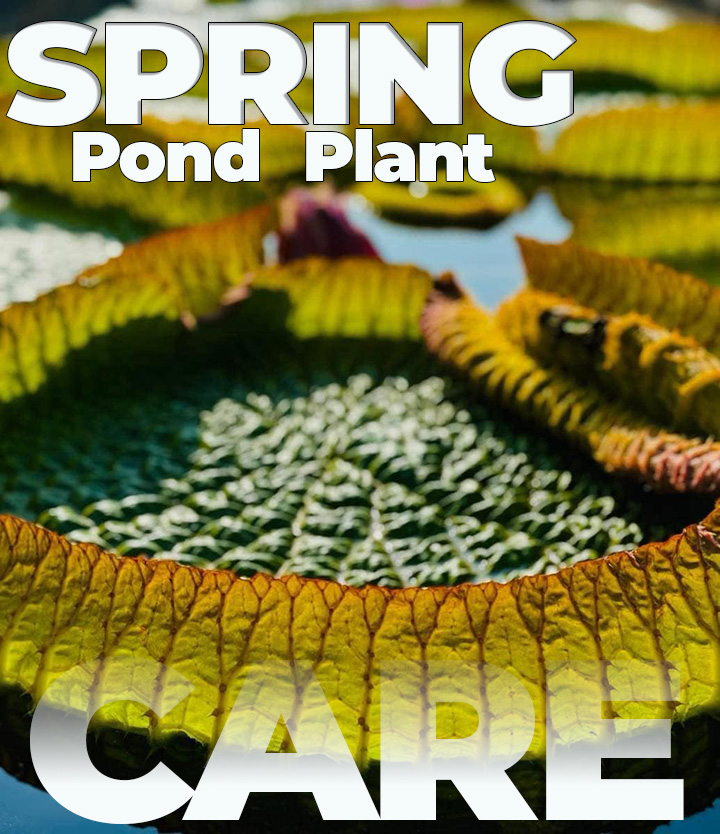How can I start pond plant care in New Jersey this spring?
If you’re planning spring pond maintenance in New Jersey, your aquatic plants should be at the top of your list. After a long, cold winter, aquatic vegetation often looks wilted, brown, or overcrowded—and ignoring it can lead to poor water quality, algae, and sluggish fish health.
This guide to pond plant care in New Jersey includes five simple, proven steps to revive your plants, support your ecosystem, and prep your pond for the season ahead.
1. Trim winter dieback to encourage new growth
The first rule of spring pond plant care? Clean up the mess winter left behind. Trimming dead foliage keeps your pond healthy and helps sunlight reach new growth beneath the surface.
✅ Cut dead or soggy stems down to the base
✅ Remove all trimmings from the pond
✅ Use sterilized shears to prevent spreading disease
Trimming is essential to early-season pond plant care in New Jersey—and makes room for vibrant regrowth.
2. Divide and repot overcrowded plants 🌱
Many New Jersey pond owners discover overgrown lilies, creeping jenny, or iris that have outgrown their containers. Spring is the best time to divide them.
✅ Lift the plant gently and rinse soil from the roots
✅ Use a clean blade to divide healthy clusters
✅ Repot using aquatic baskets and pond-safe media
This step promotes water clarity and supports better spring pond maintenance in New Jersey overall.
3. Fertilize to give plants a healthy head start 💧
As water temps warm, plants start drawing nutrients—but your pond water alone may not be enough. Use aquatic-specific fertilizer tabs to give your plants what they need without causing nutrient overload.
✅ Push tabs into the soil near roots
✅ Repeat monthly during the growing season
✅ Never over-fertilize—too much = algae risk
👉 Bonus: Our algae control guide can help you balance nutrients the natural way.
4. Reintroduce tropical plants once temps stabilize
Stored tropicals like taro and canna can’t go back into the pond too early. Wait until water stays consistently above 60°F.
✅ Set containers outside during the day
✅ Bring them indoors at night for 3–5 days
✅ Submerge fully only once temps are stable
Gradual reentry ensures your tropicals thrive during spring pond maintenance in New Jersey.
5. Add native New Jersey plants to boost balance
Adding new plants this spring? Stick to hardy, native options. They support local ecosystems, require less maintenance, and reduce the risk of invasive growth.
🌿 Excellent native choices:
-
Arrowhead
-
Water plantain
-
Sweet flag
⚖️ Keep plant coverage under 60% of surface area for best oxygenation and fish health—another crucial step in successful pond plant care in New Jersey.
Visit our YouTube channel for full builds, tips and tricks and just all around great content!
💬 FAQ: Spring Pond Maintenance Across New Jersey
Q: When should I start dividing plants in Randolph?
In Randolph, divide once water temps hold above 50°F. This avoids root shock and promotes faster healing.
Q: How can I protect new plantings in Essex County?
Essex County’s early warm spells can be misleading. Protect new plants from cold snaps by monitoring overnight lows and covering if needed.
Q: What tropicals work well for Short Hills ponds?
For Short Hills, try dwarf papyrus or hardy water hibiscus. They do well in containers and thrive with gradual reintroduction.
Q: Any native plant suggestions for Hunterdon County ponds?
Yes! Hunterdon County ponds pair well with pickerel rush, arrowhead, and duck potato—low-maintenance and great for wildlife.
📞 Book your spring pond plant care in New Jersey
Don’t let winter-damaged plants or nutrient imbalances hold your pond back this season. Whether you’re managing a small koi pond or a large backyard ecosystem, our spring pond maintenance in New Jersey ensures your plants get the expert care they need.
📅 Contact us today to schedule your spring pond service
🔗 Or explore our pond maintenance services to learn how we can help your pond thrive
